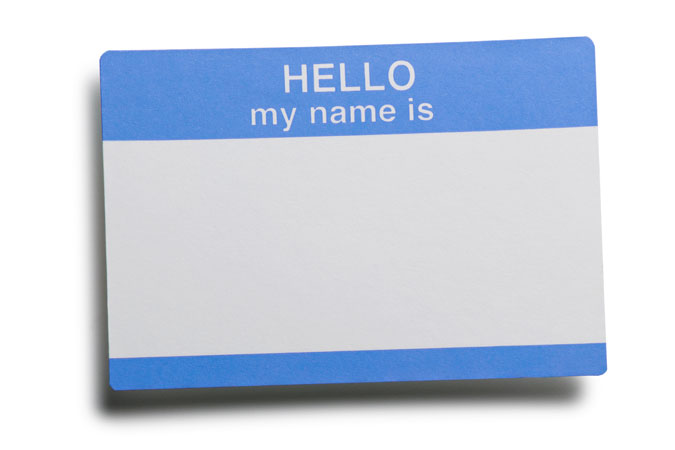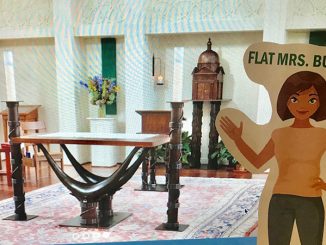
“I have called you by name, you are mine,” says the Lord. (Isaiah 43:1) This intimate connection we have with God is a gift to be celebrated. Being named Kathleen, I’ve gone through life with people automatically assuming I want to be called “Kathy” or “Kate.” I don’t want to be called something else; my name is Kathleen.
When I meet my religious education students, the first thing I do is ask them their names and what they want to be called. The boy named Charles may not want to be called “Charles”—he might prefer to be called “Charlie” or “Chuck.” Even though there are two Ashleys in class, neither wants to be called “Ashley M.” or “Ashley R.” They want to be called “Ashley.” I respect that.
When I think of welcoming our students, I’m mindful to welcome them in a way that is inviting and open; such invitations can begin with something as obvious as calling them by the name they prefer. If there’s an unfamiliar name, I ask the child to help me pronounce it correctly.
A couple of years ago, I had a student named Dagmara. After making sure I was pronouncing it properly, I mentioned that I had never met anyone named Dagmara. She told me it was her Polish grandmother’s name and told me about her grandma. That was another Aha! moment for me. I started asking my students if they were named for someone in their family; many of them had a story and wanted to tell it. Suddenly, I had an easy icebreaker! The first day of teaching first graders naturally comes with some apprehension, and this was an easy way to help the children—and myself—relax.
I make sure that name tags reflect the names that children want to be called. There was a time when I had the students make their own name tags, but first-graders’ printing does not lend itself to being seen from several feet away. I make everyone’s name tags, but I have plenty of extra ones when someone’s needs to be replaced. No one gets a name tag with a name crossed out. Everyone’s name tag is clean and correct.
I also used to write the students’ names in a big marker on the outside of their textbooks before the first class, but I’ve since stopped doing so. Otherwise, Charlie’s book says “Charles” all year. I still write their names on the books, but now I wait a week or so after I know how they want to be called.
Having a conversation about names on the first day lays a lot of good groundwork. It helps establish what the expectations are in class: we will call each other by our names, not “hey, you,” or “that kid,” or “teacher.” We will listen for our names when we take attendance. A conversation about our names and how we want to be called also provides the perfect introduction to the great love God has for us. I can talk about Jesus calling his disciples by name to help him tell the world about God’s love. I can remind them that at their Baptism, they were called into a life of faith that we’ll learn more about in the coming months. I can tell them, “What do you do when someone calls your name? You automatically look up to see who it is and say, ‘Yes, here I am.’”
This is what I want my students to understand: God calls us by name, and a beautiful friendship begins.




![The Adoration of the Magi by Jan Gossaert [Public domain], via Wikimedia Commons](https://catechistsjourney.loyolapress.com/wp-content/uploads/2017/12/Adoration-of-the-Magi-by-Jan-Gossaert-326x245.jpg)
I love that way you explain everything, for example, call the child by the name they want to be called, your own experience had given me a lot of ideas for my religion education class, thank you very much. Sincerely, Elia Lopez from Morristown, Tn.
I completely agree. My daughter is Jaclyn and everyone refers to her as Jackie but she has never asked to be called Jackie. So it is important to be respectful to each student and refer to them as they would like.
Thank you!
Debbie D. from NJ
I feel the same way, my daughter’s name is Brooke Lynn and I prefer people to call her that. Not Brooke. It is very important to address people by the name they prefer.
Jaime Smith
Springville, NY
I’ve been lucky that my classes have been small these last few years. So it’s been easy to learn their names and/or nicknames. I like the idea of telling them how God has called them “by name” into our faith…and I think I’ll read that passage to them at our first class meeting! Hope everyone has a wonderful catechetical year!!
In the Catechesis of the Good Shepherd program, we start each session by calling the child by name and welcoming them into the atrium. We also shake hands and make eye contact. Sometimes it takes months for the young children (ages 3-6) to learn to shake hands and look at the person with whom they are being greeted. BY the end of the year, they have a firm handshake, look you straight in the eye, and respond back: “Good morning or good afternoon, Mrs. M…..” When we read the parable of the Good Shepherd, they realize that the sheep, too, are called by name. When we talk about Baptism, again they are called by name. Names are so important, and individual greeting means much more! In our social media world, recognition of each child personally and making eye contact is something that must be modeled.
Some indigenous cultures prefer a gentle handshake to a firm handshake which can be considered aggressive (and painful if you have arthritic fingers). As a child, I was taught that looking an adult straight in the eyes was a sign of disrespect. Sometimes we need to take time to ensure that we are not imposing standards that are contrary to the positive teachings that have been instilled at home.